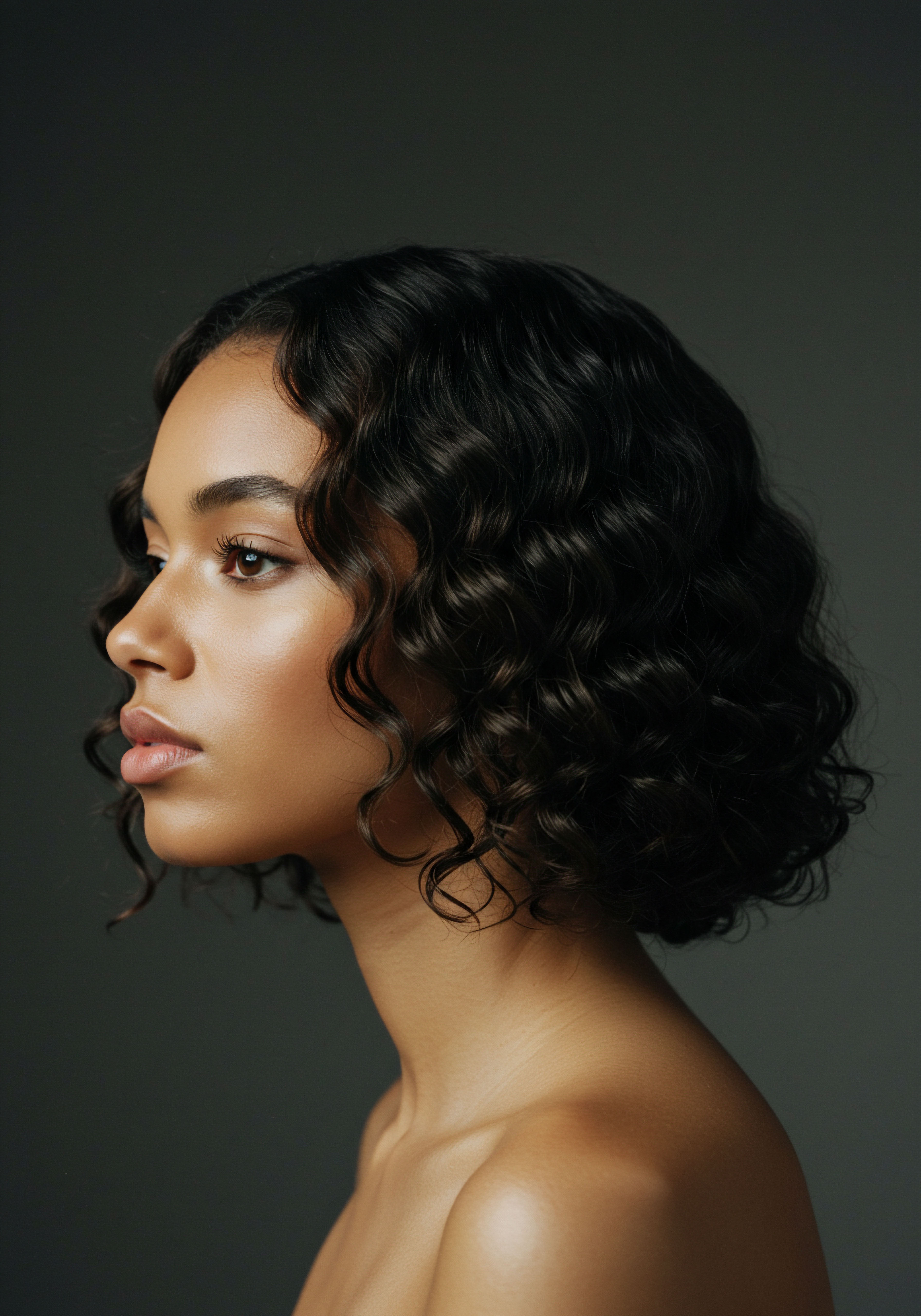
Roots
Consider a quiet afternoon, perhaps the sun streaming through a window, illuminating the delicate curl of a strand of hair as it catches the light. This simple, often overlooked detail holds within its very structure stories stretching back through millennia. It is a connection to ancestry, to climate, to ritual, and to the enduring human desire for care and adornment. We begin our inquiry into ancient Egyptian botanical preparations and their potential for contemporary textured hair health not with a grand declaration, but with this intimate observation ❉ hair, particularly textured hair, carries a history, a memory of practices that predate our modern understanding of science and beauty.
What can the sun-drenched banks of the Nile, the fertile lands tended by an ancient civilization, whisper to us about the needs of coils, kinks, and waves today? This section unearths the foundational elements, exploring the very nature of hair and the botanical wisdom cultivated in a distant past.
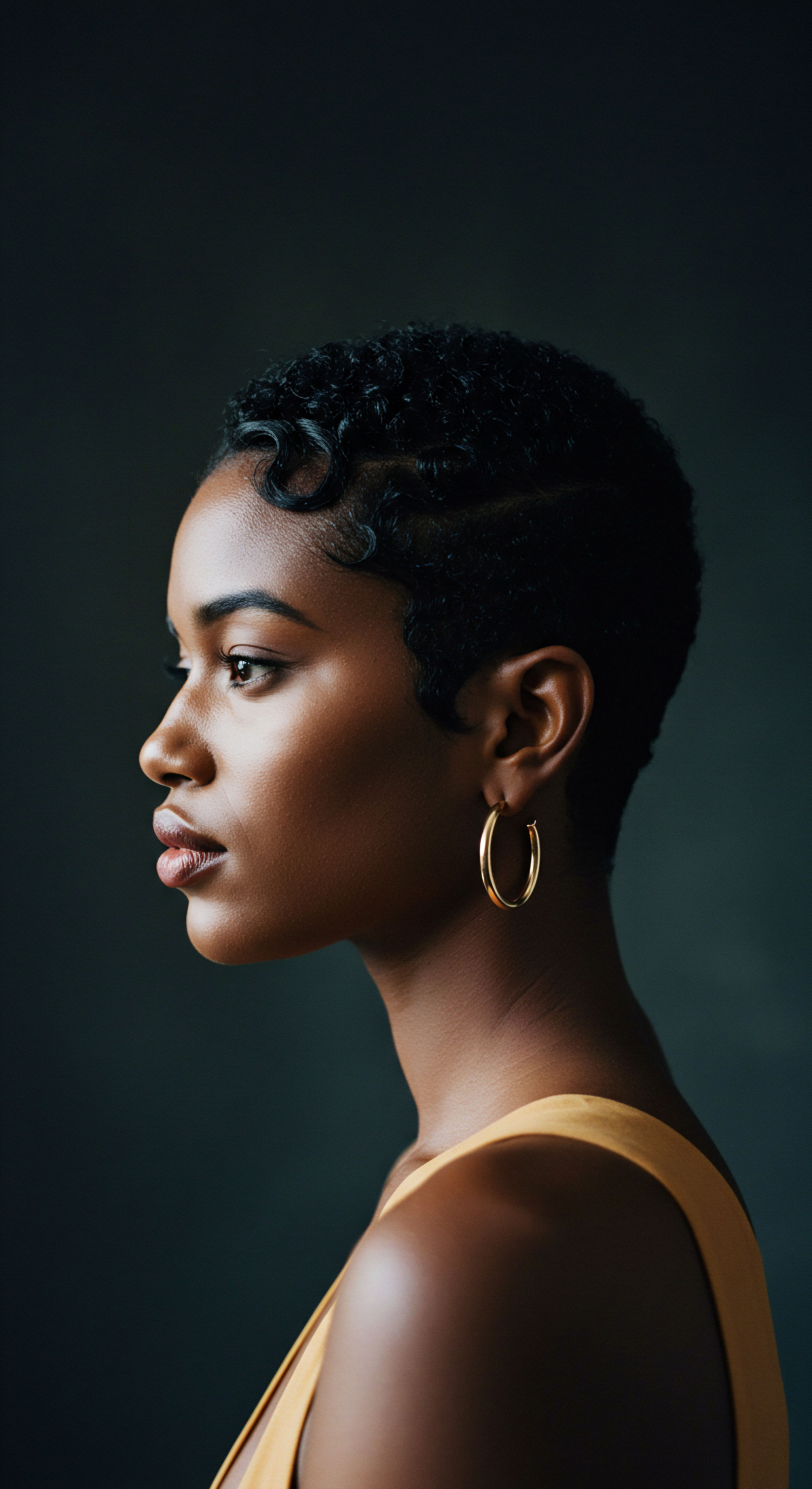
The Architecture of Textured Hair
To appreciate the potential of ancient remedies, we must first understand the unique architectural blueprints of textured hair. Unlike straight strands, which typically possess a round cross-section, textured hair exhibits an elliptical or even flat cross-section. This shape causes the hair shaft to bend and curl as it grows, creating the characteristic spirals, zig-zags, and waves. The curvature itself is not merely an aesthetic quality; it dictates much of how textured hair behaves.
The bends and twists along the shaft create natural points of weakness, making it more prone to breakage. Additionally, the cuticle layers, which act as the hair’s protective outer shield, do not lie as flat on a curved strand, leading to increased porosity and a greater tendency for moisture loss. This inherent structure means textured hair often requires specific approaches to cleansing, conditioning, and protection to maintain its integrity and vibrancy.
The unique curvature of textured hair, with its elliptical cross-section, inherently influences its strength and moisture retention.
The scalp environment, too, plays a critical role. A healthy scalp is the bedrock for healthy hair growth. Ancient Egyptians, living in a desert climate, understood the need to protect both skin and hair from harsh environmental factors. Their botanical preparations often served a dual purpose ❉ beautification and protection.
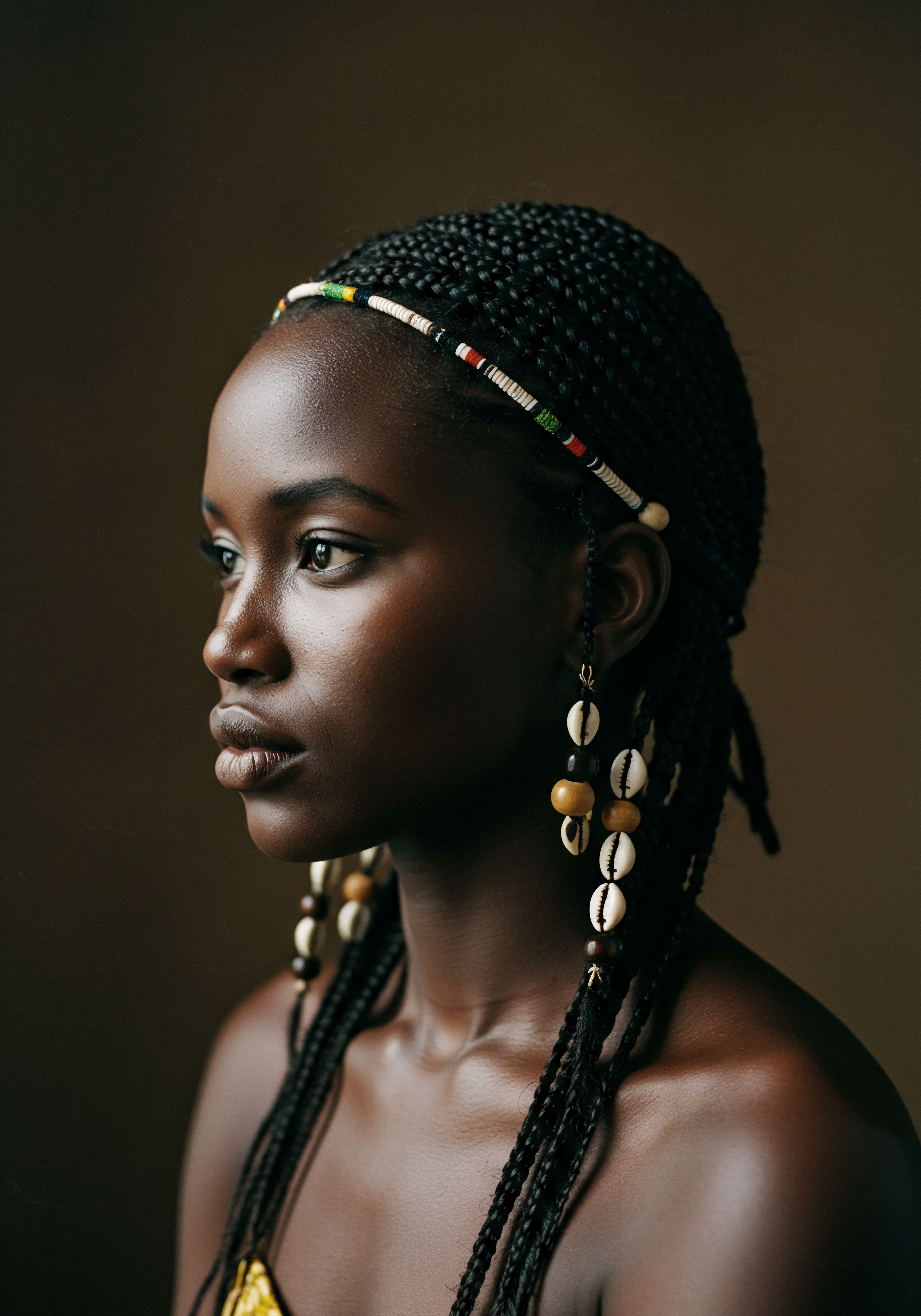
Botanical Wisdom of the Nile Valley
The ancient Egyptians were master botanists and skilled formulators, drawing upon the rich flora of their environment for medicinal, cosmetic, and ritualistic purposes. Their knowledge of plants and their properties was extensive, recorded in papyri and evidenced by archaeological discoveries. For hair care, their focus was often on lubrication, strength, and scent. They sought to shield hair from the sun’s intensity and the drying desert winds, much like contemporary individuals with textured hair seek protection from environmental stressors and moisture depletion.
- Castor Oil ❉ A staple in ancient Egyptian hair care routines, castor oil was prized for its moisturizing qualities and its ability to strengthen hair. Egyptians combined it with other natural components, including honey and various herbs, to create hair masks that encouraged growth and imparted a luminous sheen. Cleopatra herself is said to have relied upon castor oil for her iconic, glossy black hair.
- Moringa Oil ❉ Known as “ben oil” or “behen oil,” moringa oil was highly valued in ancient Egypt, even placed in tombs as a necessity for the afterlife. This light oil, rich in antioxidants and fatty acids, served as a protective agent against sun and desert winds, and was used for cleansing and nourishing hair without leaving heavy residue.
- Henna ❉ Sourced from the Lawsonia inermis plant, henna was a significant component of ancient Egyptian hair practices, utilized for both its coloring and conditioning attributes. It provided a reddish tint, covered gray strands, and also offered conditioning and strengthening properties, coating the hair shaft and supporting overall hair texture.
- Balanites Aegyptiaca Oil ❉ Also known as Desert Date oil, this oil, extracted from the seed kernels, contains fatty acids like palmitic, stearic, oleic, and linoleic acids. Historically, its fruit pulp was used as a detergent for washing hair and clothes, and the oil itself possesses antimicrobial activity and promotes hair growth.

The Ancient Lexicon of Hair Health
The ancient Egyptians had a sophisticated understanding of hair concerns, addressing issues like baldness and graying. The Ebers Papyrus, a medical text dating back to approximately 1550 BCE, contains numerous remedies for hair loss, some involving mixtures of animal fats and various botanical additions. While some of these ancient prescriptions might seem unusual by modern standards, they underscore a consistent concern for hair vitality that transcends time.
The practice of oiling and creaming hair was widespread, with high combs used to distribute products and keep hair clean. This attention to hair health was not merely about appearance; it was deeply intertwined with status, beauty, and even spiritual symbolism.
Archaeological findings reveal that ancient Egyptians used various tools, including combs made from ivory or fish bones, to apply oils evenly. They also used wigs and extensions, often made of human hair or plant fibers, set with beeswax and animal fat, indicating a desire for elaborate and maintained styles. This historical context sets the stage for exploring how these ancient practices and botanical choices might hold lessons for contemporary textured hair care, particularly given the shared needs for moisture, strength, and protection.
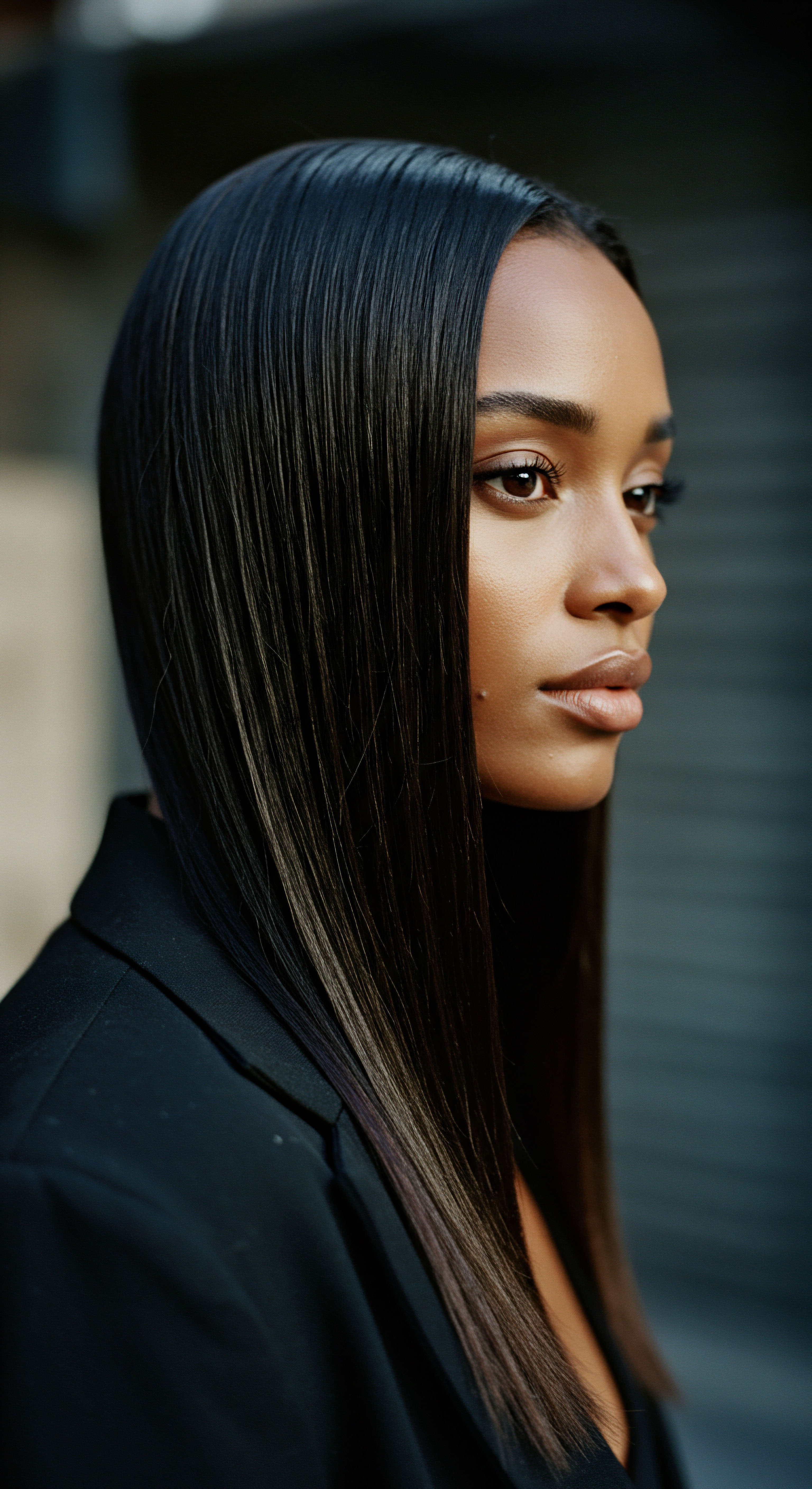
Ritual
The daily rhythm of life often finds its grounding in repeated actions, quiet moments of care that shape our being. For textured hair, these moments transform into rituals, a conscious dedication to its unique needs. Stepping into this space of ritual, we seek to understand how the ancient Egyptians approached their hair care, not as a fleeting trend, but as a deliberate practice. Their approach, steeped in a deep respect for natural elements, offers a practical wisdom that can illuminate our own contemporary routines.
How might the mindful application of ancient botanicals, once part of daily life along the Nile, guide our hands today as we tend to our coils and curls? This section bridges the historical with the practical, examining the techniques, preparations, and daily habits that could translate into a more harmonious relationship with textured hair.

Preparing Botanical Preparations for Textured Hair
The effectiveness of ancient Egyptian botanical preparations lay not only in the ingredients themselves but also in their thoughtful preparation. Oils, often infused with herbs, formed the backbone of their hair care. The process would likely involve cold-pressing or macerating plant materials in a base oil to extract their beneficial compounds.
This method, still valued today, helps to preserve the integrity of heat-sensitive components like vitamins and antioxidants. For example, moringa oil, revered in ancient Egypt, was likely extracted through cold pressing, a method known to preserve its nourishing properties.
Consider the meticulous process of preparing henna. The leaves of the Lawsonia inermis plant were dried and then finely powdered. This powder was then mixed with water or other liquids, such as oils, to create a paste.
This paste was then applied to the hair, not only for its rich reddish dye but also for its conditioning attributes. The binding of lawsone, henna’s active molecule, with hair’s keratin offers a protective layer, enhancing shine and strength.
Ancient Egyptian hair care emphasized thoughtful preparation, often involving cold-pressed oils and finely ground botanical pastes.
Beyond simple oils, the Egyptians also crafted more complex mixtures. Evidence from mummies suggests the use of fat-based “gels” to set hairstyles, containing long-chain fatty acids like palmitic and stearic acids. While the exact botanical origins of all components in these gels are not fully known, they certainly speak to a sophisticated understanding of formulation for specific hair needs, such as holding styles in place in a challenging climate.

Applying Ancient Wisdom to Modern Routines
For textured hair, the principle of gentle handling and consistent moisture application remains paramount. Ancient Egyptian practices align well with these modern needs. The consistent use of oils like castor and moringa oil points to a deep understanding of lubrication and scalp health.
- Oil Cleansing and Conditioning ❉ Instead of harsh sulfates, ancient Egyptians used animal fats or vegetable oils mixed with alkaline salts for cleansing. This concept translates to modern oil cleansing or pre-poo treatments for textured hair, where oils are applied before shampooing to protect strands from stripping and maintain moisture. A castor oil and honey mask, reminiscent of ancient recipes, could serve as a rich conditioning treatment, helping to fortify strands and add a natural sheen.
- Scalp Health Rituals ❉ The massaging of oils into the scalp was a common practice. This physical stimulation, combined with the properties of oils like moringa, which is known for its anti-inflammatory and moisturizing effects on the scalp, directly supports healthy hair growth. A weekly scalp treatment with a blend of moringa and castor oils, perhaps warmed gently, could mirror these ancient rituals, promoting circulation and delivering nutrients directly to the follicles.
- Protective Styling and Adornment ❉ The Egyptians’ extensive use of wigs and hair extensions, often secured with beeswax and resins, highlights a cultural appreciation for protective styles. For contemporary textured hair, protective styles shield delicate ends from environmental damage and reduce manipulation, contributing to length retention. While we may not use beeswax in the same way, the underlying principle of protecting the hair’s integrity remains a valuable lesson.
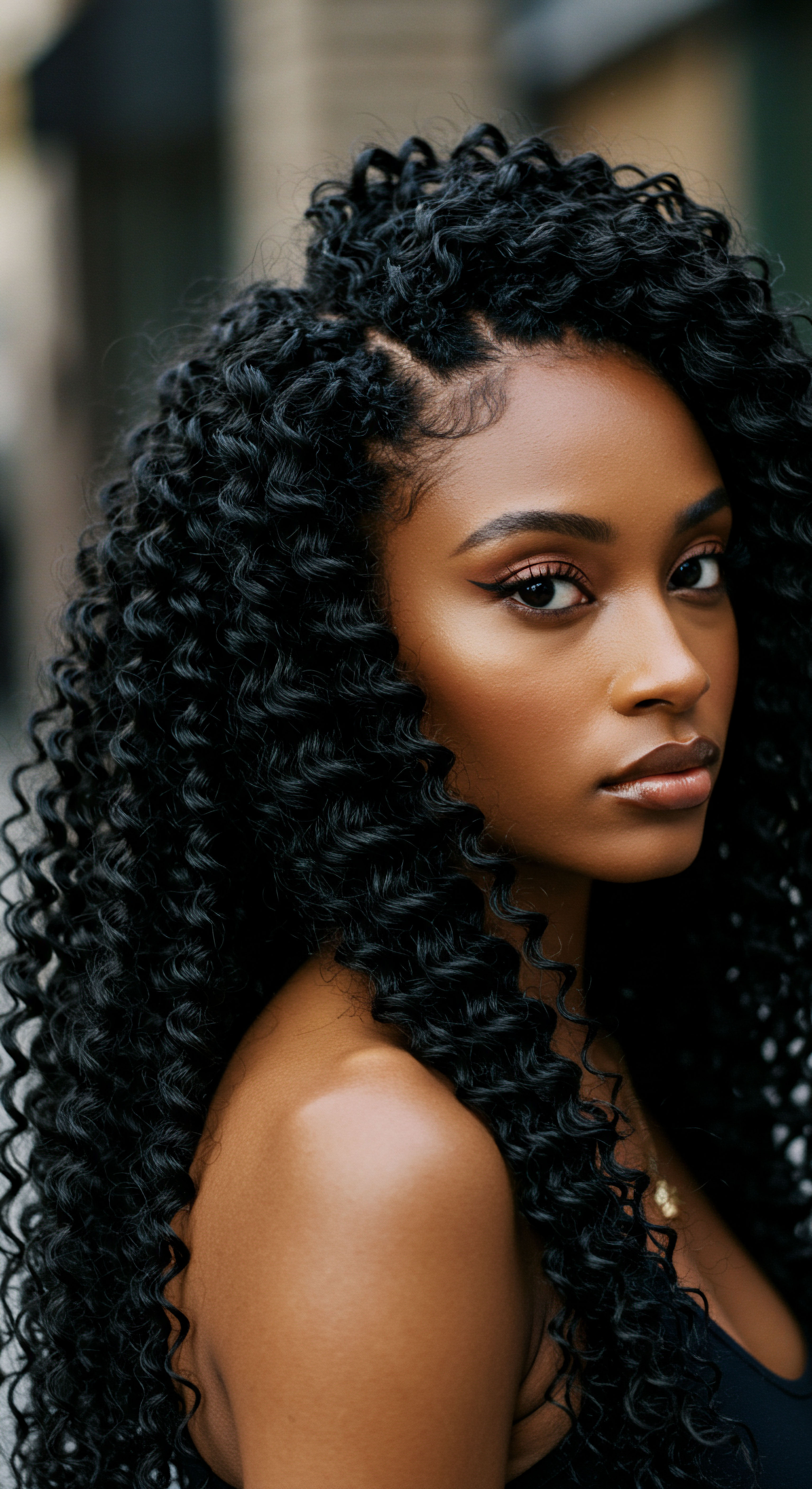
Can Ancient Formulations Address Specific Textured Hair Concerns?
The botanical choices of the ancient Egyptians, when viewed through a contemporary lens, offer promising avenues for addressing common textured hair concerns. For instance, the high porosity of many textured hair types means they lose moisture quickly. Oils like Castor Oil and Moringa Oil, with their rich fatty acid profiles, provide a protective barrier, helping to seal in hydration.
Moreover, issues like scalp irritation or dryness, common in textured hair communities, might find relief in the anti-inflammatory and antimicrobial properties of certain ancient botanicals. Balanites Aegyptiaca Oil, for example, is noted for its anti-inflammatory and antibacterial attributes, which could soothe an irritated scalp and help purge clogged hair follicles, supporting healthier growth.
While direct scientific studies on ancient Egyptian hair preparations for textured hair specifically are limited, the individual components they used have modern research backing their benefits. For example, a study on the hair of mummies revealed a fat-based substance, rich in stearic acid, used as a hair gel. This particular fatty acid is also a significant component of shea butter, a widely recognized ingredient in modern textured hair care, known for its conditioning properties.
This connection suggests an ancestral understanding of emollients that remains relevant today. The consistency of some ancient Egyptian hair products, as described in archaeological analyses, points to their practical application in holding styles and conditioning strands, echoing the needs of textured hair that requires definition and moisture retention.

Relay
Beyond the simple application of plant extracts, a deeper inquiry into ancient Egyptian botanical preparations for textured hair invites us to consider the intricate interplay of science, culture, and the subtle energies that shaped their world. How might the sophisticated knowledge of a civilization that revered the natural world offer insights into the contemporary science of textured hair, moving beyond surface-level solutions to a more profound understanding? This section seeks to bridge the chasm between ancient wisdom and modern scientific understanding, exploring how traditional practices might offer solutions to complex hair challenges, supported by research and a multi-dimensional perspective.

Phytochemistry and Hair Fiber Science
The efficacy of ancient Egyptian botanicals for textured hair can be examined through the lens of modern phytochemistry. Plants synthesize a vast array of compounds, many with specific biological activities. For hair, these include antioxidants, fatty acids, vitamins, and anti-inflammatory agents.
For instance, the use of Moringa Oil was widespread. This oil, extracted from the seeds of the Moringa oleifera tree, is abundant in monounsaturated fatty acids, particularly oleic acid, along with tocopherols (Vitamin E) and phytonutrients. Oleic acid, a primary component, is a known emollient that can deeply penetrate the hair shaft, providing lubrication and reducing friction, which is particularly beneficial for the delicate, curved structure of textured hair that is prone to mechanical damage. The antioxidants present help to neutralize free radicals, mitigating environmental stress that can degrade hair proteins and lipids.
Another compelling botanical is Henna. Its active coloring molecule, lawsone, interacts with the keratin in hair, forming a protective coating. This coating not only imparts color but also contributes to the hair’s tensile strength and reduces porosity, which is a significant advantage for textured hair types that often struggle with moisture retention due to raised cuticles.
Research indicates that henna possesses antimicrobial and anti-inflammatory properties, offering relief for scalp conditions such as dandruff and itchiness. This holistic action on both the hair fiber and the scalp environment underscores a sophisticated, albeit ancient, understanding of hair health.

The Microbiome Connection to Ancient Practices?
Could ancient Egyptian practices, perhaps inadvertently, have supported a healthy scalp microbiome, a concept only recently gaining traction in contemporary hair science? While direct evidence of ancient Egyptian understanding of microorganisms is absent, their reliance on natural ingredients with antimicrobial properties, such as Balanites Aegyptiaca Oil, suggests an indirect benefit. This oil, derived from the Desert Date tree, exhibits documented antimicrobial activity.
A balanced scalp microbiome is crucial for textured hair health, as imbalances can lead to issues like flaking, irritation, and even impaired growth. Regular application of botanicals with gentle cleansing and antimicrobial properties could have fostered an environment conducive to beneficial microbial populations on the scalp, deterring pathogenic overgrowth.
Consider a compelling, if perhaps controversial, point ❉ a 2011 study published in the Journal of Archaeological Science by McCreesh et al. analyzed hair samples from 18 mummies, some dating back 3,500 years. The researchers discovered that nine of these mummies had hair coated in a fat-based substance, primarily composed of palmitic and stearic acids, suggesting a deliberate styling product used in both life and death. While the study focused on the composition of this “hair gel,” it opens a discussion ❉ could the consistent application of such fatty, natural substances, derived from plants or animals, have contributed to the preservation of hair over millennia, not just stylistically, but structurally?
The fatty acids could have acted as emollients, reducing cuticle damage and preventing moisture loss, thus maintaining the hair’s integrity in extreme conditions. This echoes the modern understanding of how lipids protect and strengthen textured hair. The mere presence of such well-preserved hair on mummies, despite millennia, offers a tangible, real-world data point for the protective capabilities of these ancient formulations.
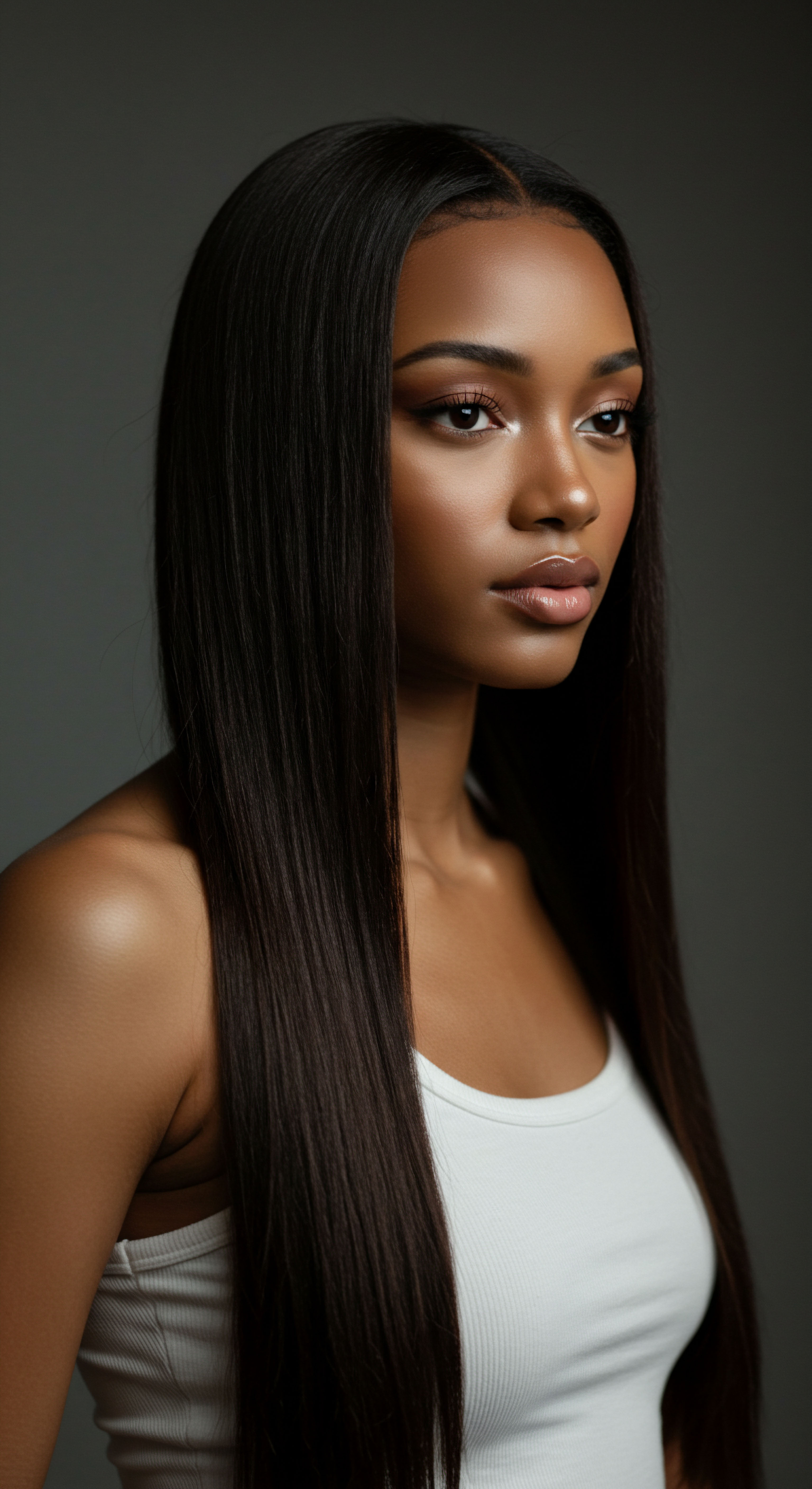
Cultural Significance and Psychological Well-Being
Beyond the chemical composition, the cultural and psychological dimensions of ancient hair care practices bear consideration. For the ancient Egyptians, hair was a powerful symbol of status, beauty, and identity. The elaborate wigs, extensions, and meticulously styled natural hair were not mere vanity; they were expressions of self and social standing. This deep connection to personal appearance suggests that hair care rituals were not just about physical results, but also about mental and emotional well-being.
The deliberate, often communal, act of hair dressing could have fostered a sense of self-worth and connection. The sensory experience of applying perfumed oils and natural preparations, as opposed to chemically harsh alternatives, likely contributed to a more positive relationship with one’s hair. This holistic perspective, where physical care intertwines with self-perception and cultural identity, holds profound lessons for contemporary textured hair communities.
The current movement towards embracing natural hair often includes a psychological shift, a return to practices that celebrate inherent beauty and self-acceptance. Ancient Egyptian rituals, with their emphasis on natural ingredients and mindful application, serve as a historical precedent for this approach.
| Botanical Name Ricinus Communis (Castor Oil) |
| Key Ancient Uses Moisturizing, strengthening, growth promotion. |
| Modern Phytochemical Properties Ricinoelic acid, fatty acids, Vitamin E. |
| Potential Benefits for Textured Hair Deep conditioning, scalp nourishment, breakage reduction, moisture sealing. |
| Botanical Name Moringa Oleifera (Moringa Oil) |
| Key Ancient Uses Protection from sun/wind, cleansing, nourishing. |
| Modern Phytochemical Properties Oleic acid, tocopherols, antioxidants, vitamins. |
| Potential Benefits for Textured Hair Lightweight hydration, anti-inflammatory for scalp, environmental protection, shine. |
| Botanical Name Lawsonia Inermis (Henna) |
| Key Ancient Uses Dyeing, conditioning, strengthening. |
| Modern Phytochemical Properties Lawsone, tannins, flavonoids. |
| Potential Benefits for Textured Hair Protein bonding for strength, cuticle smoothing, color enhancement, anti-dandruff. |
| Botanical Name Balanites Aegyptiaca (Desert Date Oil) |
| Key Ancient Uses Detergent, hair growth, antimicrobial. |
| Modern Phytochemical Properties Fatty acids (palmitic, stearic, oleic, linoleic), saponins, flavonoids. |
| Potential Benefits for Textured Hair Scalp cleansing, antimicrobial action, healthy growth support, moisture retention. |
| Botanical Name This table highlights how ancient botanical choices align with modern scientific understanding of hair care. |

Considering the Interconnectedness of Well-Being
The ancient Egyptian approach to beauty was rarely isolated from their broader understanding of health and spiritual harmony. Their cosmetic preparations were often seen as having protective and even ritualistic functions. This integrated view suggests that hair health was not merely a superficial concern, but a component of overall well-being. For textured hair, this translates to acknowledging the external factors (environment, products) and internal factors (nutrition, stress) that influence its condition.
The desert environment of ancient Egypt necessitated a focus on moisture and protection. Their use of oils was a direct response to these environmental challenges. For textured hair, which often contends with dryness and vulnerability to humidity changes, this ancient emphasis on barrier-forming emollients holds direct relevance. The consistency of applying these rich, natural substances suggests a sustained effort to maintain hair integrity, a practice that aligns with the consistent care required for textured hair today.

Reflection
As we close our exploration into the botanical wisdom of ancient Egypt and its quiet echoes in contemporary textured hair care, a sense of enduring connection lingers. The careful hands that once prepared oils and pastes along the Nile, seeking to nourish and adorn, speak to the same universal desire for well-being that guides us today. There is a profound beauty in recognizing how the inherent needs of textured hair—for moisture, for strength, for gentle protection—were, in essence, understood and addressed thousands of years ago through the simple generosity of the earth. Perhaps the most resonant lesson from these ancient traditions is not just a list of ingredients, but an invitation to approach our hair, and indeed our whole selves, with a mindful reverence, allowing the timeless dance of nature to guide our path to serene strands.
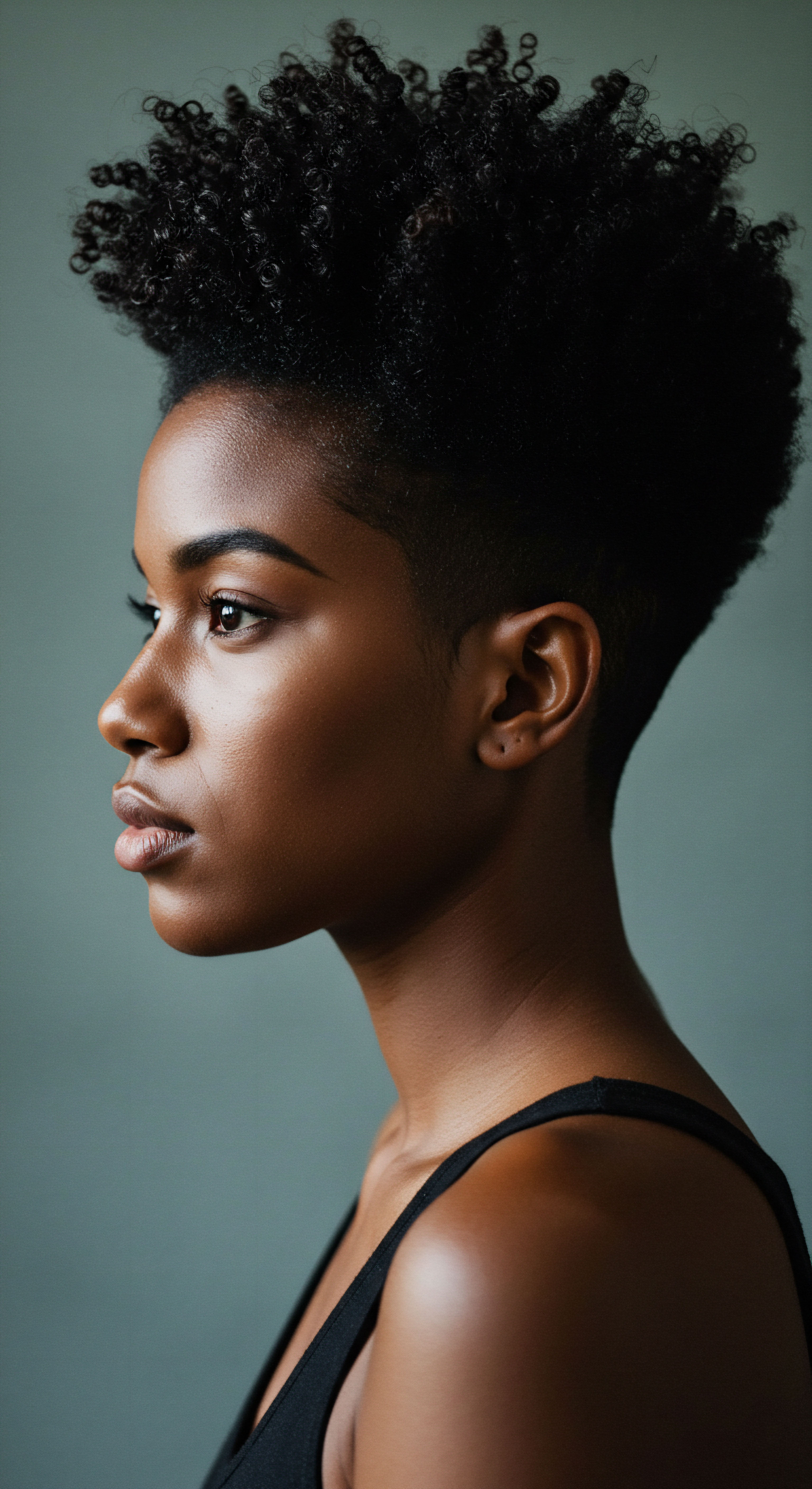
References
- McCreesh, N. C. et al. “Ancient Egyptian hair gel ❉ New insight into ancient Egyptian mummification procedures through chemical analysis.” Journal of Archaeological Science, vol. 38, no. 12, 2011, pp. 3432-3434.
- Fletcher, J. “Hair and the Ancient Egyptian ❉ A Study in Sexuality, Society and the Afterlife.” The Journal of Egyptian Archaeology, vol. 87, 2001, pp. 101-122.
- Germer, R. “Ancient Egyptian Hair and Cosmetics.” In Ancient Egyptian Materials and Technology, edited by P. Nicholson and I. Shaw, Cambridge University Press, 2000, pp. 277-285.
- Manniche, L. “An Ancient Egyptian Herbal.” British Museum Press, 1999.
- Ghaly, M. “Traditional Ancient Egyptian Medicine ❉ A Review.” Journal of Pharmaceutical Research International, 2021, pp. 19-32.
- Al-Rawi, A. “Balanites aegyptiaca (L.) Delile ❉ A review of its traditional uses, phytochemistry, and pharmacology.” Journal of Ethnopharmacology, vol. 189, 2016, pp. 1-19.
- Saleh, N. M. “The Use of Natural Ingredients in Cosmetics in Ancient Egypt.” Cosmetics, vol. 10, no. 3, 2023, pp. 71.
- El-Shazly, A. M. & Abdel-Rahman, A. H. “Moringa oleifera Lam. as a source of medicinal and cosmetic products.” Journal of Applied Sciences Research, vol. 8, no. 2, 2012, pp. 759-768.
- Badr, A. et al. “Genetic evidence for the origins of Egyptian cultivated plants.” Theoretical and Applied Genetics, vol. 100, no. 7, 2000, pp. 1109-1115.
- Lucas, A. “Ancient Egyptian Materials and Industries.” Edward Arnold & Co. 1962.